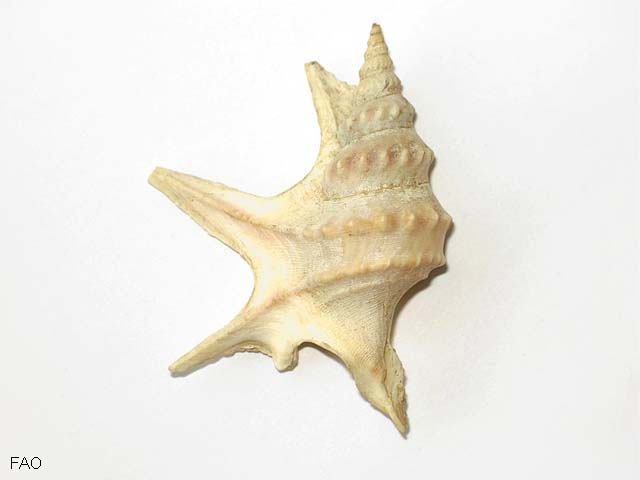| Aporrhaidae () |
|
|
benthic; marine; depth range 6 - 8 m |
| Northeast Atlantic, Arctic and the Mediterranean: North and Celtic seas. Temperate to polar. |
|
Shell: quite high conical spire, with an outer lip characteristically broadened and fingered, looking like a bird's foot; whorls are angular with a nodular median keel (two in the body whorl); the suture is hardly incised; outer lip of the aperture is thickened, and the inner lip produces a marked columellar callus; development of the external fingers marks the attainment of maturity; sculpture consists of the nodular keel and thin spiral grooves that extend over the whole surface; coloration is variable, white, beige, darkish chestnut, reddish brown or patched, axially flamed with draker shades than the base color; operculum is horny, ellipsoidal and with a terminal nucleus. Body: pink or reddish with whitish spots, foot is very long and narrow; eyes sessile, set at the bases of the long tentacles; mantle cavity has one gill, the osphradium/penis; radula is taenioglossan. |
|
|
Not Evaluated (N.E.) Ref. 123251)
|
|
|
M: Ref. 75701. |
Source and more info: www.sealifebase.org. For personal, classroom, and other internal use only. Not for publication.

